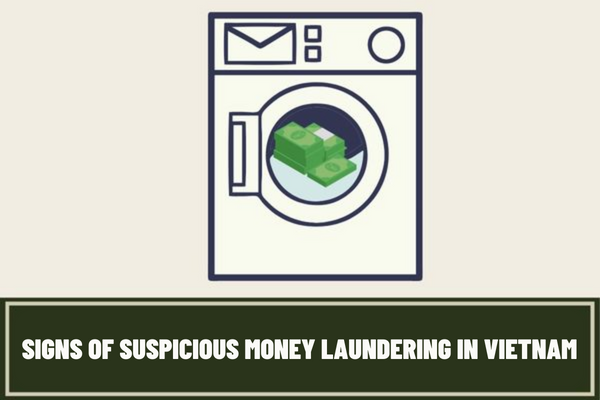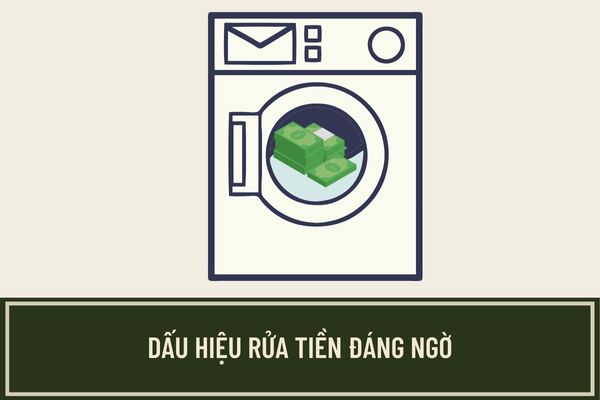What are the signs of suspicious money laundering in the sector of real estate business, life insurance business and payment intermediary in Vietnam?
- What are signs of Suspicious Activity in Real Estate Business Sector related to money laundering in Vietnam?
- What are the signs of suspicious activity in life insurance business sector related to money laundering in Vietnam?
- What are the signs of suspicious activity in payment intermediary sector related to money laundering in Vietnam?
What are signs of Suspicious Activity in Real Estate Business Sector related to money laundering in Vietnam?
Pursuant to Article 33 of the 2022 Law on Anti-Money Laundering in Vietnam as follows:
Signs of Suspicious Activity in Real Estate Business Sector
1. Real estate transactions are the authorized transactions performed without reference to any legal basis.
2. A customer does not care about the price of the real property or transaction fees payable.
3. A customer fails to provide information relating to the real property in question or does not wish to provide further information about his/her personal background.
4. The price involved in a transaction between parties does not match the market price.
Thus, signs of suspicious activity in real estate business sector related to money laundering include:
- Real estate transactions are the authorized transactions performed without reference to any legal basis.
- A customer does not care about the price of the real property or transaction fees payable.
- A customer fails to provide information relating to the real property in question or does not wish to provide further information about his/her personal background.
- The price involved in a transaction between parties does not match the market price.

What are the signs of suspicious money laundering in the sector of real estate business, life insurance business and payment intermediary in Vietnam?
What are the signs of suspicious activity in life insurance business sector related to money laundering in Vietnam?
Signs of suspicious activity in life insurance business sector related to money laundering specified in Article 30 of the 2022 Law on Anti-Money Laundering in Vietnam include:
(1) A customer requests the purchase of an insurance policy of unusually great value, or demands a lump-sum payment of insurance premiums if such payment is not permitted for the requested insurance product, despite the fact that its/his/her existing insurance policies are of low value and require the payment of insurance premiums in instalments.
(2) A customer requests the underwriting of an insurance contract for which each instalment of insurance premium paid does not match its/his/her current income.
(3) An insurance buyer pays the insurance premium through an account other than its/his/her account or the account of its/his/her authorized entity or person, or by bearer negotiable instruments.
(4) An insurance buyer requests replacement of the nominee beneficiary by a natural person who does not have a clear relationship with him/her.
(5) A customer accepts all unfavorable conditions not relating to his/her age, health condition; a customer requests the purchase of insurance for indefinite purposes; conditions and value of an insurance contract are contradictory to his/her needs.
(6) An insurance buyer waives the insurance contract promptly after purchase and requests transfer of paid insurance premiums to a third party; a customer regularly participates in insurance and transfers the insurance contract to a third party.
(7) A customer is a company where the number of insurance contracts for its employees or the amount of insurance premium in an insurance contract under which insurance premiums are paid on a lump-sum basis is unusually increased.
(8) An insurance company frequently pays a large amount of money for insurance to the same customer.
What are the signs of suspicious activity in payment intermediary sector related to money laundering in Vietnam?
Pursuant to Article 29 of the 2022 Law on Anti-Money Laundering in Vietnam, there are 09 signs of suspicious activity in payment intermediary sector, including:
- There is a dramatic change in the volume of transactions performed on an e-wallet; money flowing in or out from an e-wallet quickly; despite the great volume of transactions performed a day, the balance remaining in an e-wallet is tiny or equals zero.
- A customer frequently tops up or recharges an e-wallet with a lot of small replenishments, then carries out a transaction involving transferring a large amount of money to an e-wallet or withdrawing a large amount of money to its/his/her bank checking account or debit card or vice versa.
- Transactions involving transfer of small amounts of money from various e-wallets to an e-wallet or vice versa occur in a short while; a transaction involves transfer of an amount of money to different e-wallets; parties concerned in a transaction do not care about transaction fees; a lot of transactions, each of which is close to the great value requiring to be reported, are performed; an e-wallet records a lot of transactions involving transfer of funds to another e-wallet in a unusually short time of origination of each transaction.
- A customer’s e-wallet unexpectedly is credited with an unusually great top-up amount.
- A transaction involving crediting or debiting money to or from an e-wallet account or transferring money between e-wallets is performed by an entity or person obtaining illegal assets as a result of criminal activity that has been named on the mass media.
- There is a suspicion that a customer uses a personal account for conducting a transaction relating to the structure of a legal person, or acting on behalf of other natural person to perform a transaction.
- A customer is the merchant that still records any transaction even though the inspection proves that its official website or office has been closed.
- Online transactions performed through e-wallets change constantly in terms of login devices or IP addresses.
- A customer regularly uses login devices or IP addresses abroad to have access to an e-wallet or perform transactions on an e-wallet; frequently uses a login device or IP address to carry out transactions on various e-wallets of which holders are different.
LawNet
